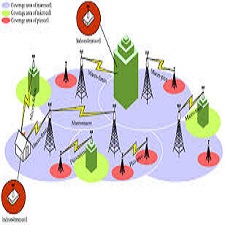توضیحات
ABSTRACT
After closure, municipal solid waste (MSW) landfills must be managed and controlled to avoid dverse effects on human health and the environment (HHE). Aftercare (or post-closure care) can be brought to an end when the authorities consider the landfill to no longer pose a threat to HHE. Different approaches have been suggested for long-term landfill management and evaluation of aftercare completion. In this paper, research on aftercare and its completion is analyzed and regulatory approaches for the completion of landfill aftercare are reviewed. Approaches to ftercare could be categorized as (i) target values, (ii) impact/risk assessment, and (iii) erformance based. Comparison of these approaches illustrates that each has limitations and strengths. While target values are typically used as screening indicators to be complemented with site-specific ssessments, impact/risk assessment approaches address the core issue about aftercare ompletion, but face large uncertainties and require a high level of expertise. A performance-based approach allows for the combination of target values and impact/risk assessments in a consistent evaluation framework with the aim of sequentially reducing aftercare intensity and, ultimately, leading to the completion of aftercare. At a regulatory level, simple qualitative criteria are typically used as the primary basis for defining completion of aftercare, most likely due to the complexity of
developing rigorous evaluation methodologies. This paper argues that development of transparent and consistent regulatory procedures represents the basis for defining the desired state of a landfill at the end of aftercare and for reducing uncertainty about the intensity and duration of aftercare. In this context, recently presented technical guidelines and the ongoing debate with respect to their regulatory acceptance are a valuable step towards developing strategies for the cost-effective protection of HHE at closed MSW landfills.
INTRODUCTION
Municipal solid waste (MSW) landfills represent the dominant option for waste disposal in many parts of the world. In general, the comparatively high costs of treatment and disposal alternatives
are a major reason for the reliance on MSW landfills, particularly in developing economies (Brunner and Fellner, 2007). Nevertheless, even some highly industrialized countries such as the US, Australia, the UK, and Finland largely depend on landfilling. For example, in the US, 54% of the 250 Tg (1Tg = 106 metric tons) of MSW generated was landfilled in 2008, with recycling and composting accounting for about 33% of MSW management (USEPA, 2009).
چکیده
پس از بسته شدن، دفن زباله های جامد شهری (MSW) باید برای جلوگیری از اثرات معکوس بر سلامت انسان و محیط زیست (HHE) مدیریت و کنترل شود. پس از اتمام مراقبت (یا مراقبت پس از تعطیل) می توان از بین برود زمانی که مقامات تصفیه خانه را به خطر انداخته اند. برای مدیریت زباله های درازمدت و ارزیابی پس از اتمام مراقبت ها، روش های مختلفی پیشنهاد شده است. در اين مقاله، تحقيقات در مورد مراقبت پس از زايمان و تکميل آن، مورد تجزيه و تحليل قرار گرفته و رويکردهاي تنظيمي براي اتمام پسماند دفن زباله مورد بررسي قرار گرفته است. رویکردهای ftercare می تواند به عنوان (i) مقادیر هدف، (ii) ارزیابی تاثیر / خطر، و (iii) بر اساس ارزیابی، طبقه بندی شود. مقایسه این روش ها نشان می دهد که هر یک از آنها دارای محدودیت ها و نقاط قوت است. در حالی که مقادیر هدف معمولا به عنوان شاخص های غربالگری برای تکمیل مطالب خاص سایت مورد استفاده قرار می گیرند، رویکردهای ارزیابی تأثیر / ریسک به مسئله اصلی در مورد مراقبت از مراقبت از بیمار کمک می کند اما با عدم اطمینان زیاد و نیاز به تخصص بالایی برخوردار است. رویکرد مبتنی بر عملکرد، ترکیبی از مقادیر هدف و ارزیابی تاثیر / خطر در یک چارچوب ارزیابی سازگار را با هدف کاهش شدت مراقبت پس از عمل و در نهایت منجر به تکمیل مراقبت پس از عمل می کند. در یک سطح قانونی، معیارهای کیفی ساده معمولا به عنوان مبنای اولیه برای تعریف تکمیل مراقبت پس از عمل، به احتمال زیاد به دلیل پیچیدگی توسعه روش های ارزیابی دقیق. در این مقاله استدلال می شود که توسعه روش های نظارتی شفاف و سازگار، مبنایی برای تعیین وضعیت مورد نظر در محل دفن زباله در انتهای مراقبت پس از زایمان و کاهش عدم اطمینان در مورد شدت و مدت مراقبت پس از آن است. در این زمینه، دستورالعمل های فنی اخیرا و بحث های در حال انجام با توجه به پذیرش قانونی آنها گامی ارزشمندی در جهت ایجاد راهکارهایی برای حفاظت از هزینه های قابل قبول HHE در دفاتر زباله مجتمع های زباله است.
مقدمه
دفاتر زباله های شهری (MSW) دفن زباله ها نشان دهنده گزینه غالب برای دفع زباله در بسیاری از نقاط جهان است. به طور کلی، هزینه های نسبتا بالایی از جایگزین های درمان و دفع یکی از دلایل اصلی وابستگی به دفن زباله های زباله، به ویژه در کشورهای در حال توسعه است (Brunner and Fellner، 2007). با این وجود، حتی برخی از کشورهای صنعتی بسیار صنعتی مانند ایالات متحده، استرالیا، انگلستان و فنلاند عمدتا به دفن زباله بستگی دارند. به عنوان مثال، در ایالات متحده، در سال 2008، 54 درصد از 250 تری گلیسریا (106 تریلیون تن) تولید شده در سال جاری تخلیه شد، در حالیکه بازیافت و کمپوست حدود 33 درصد از مدیریت زباله را تشکیل می دهد (USEPA، 2009).
Year: 2012
Publisher : ELSEVIER
By : David Laner , Marion Crest , Heijo Scharff , Jeremy W.F. Morris , Morton A. Barlaz
File Information: English Language/ 15 Page / size: 272 KB
Only site members can download free of charge after registering and adding to the cart
سال : 1391
ناشر : ELSEVIER
کاری از : دیوید لاینر، ماریون کروز، هیهو شارف، جرمی W.F. موریس، مورتون A. بارلا
اطلاعات فایل : زبان انگلیسی / 15 صفحه / حجم : KB 272


![A review of approaches for the long-term management of municipal solid[taliem.ir]](https://taliem.ir/wp-content/uploads/A-review-of-approaches-for-the-long-term-management-of-municipal-solidtaliem.ir_.jpg)





![Production of Ozone and Reactive Oxygen Species After Welding[taliem.ir]](https://taliem.ir/wp-content/uploads/Production-of-Ozone-and-Reactive-Oxygen-Species-After-Weldingtaliem.ir_-1-150x150.jpg)
![A CASE STUDY ON GREEN INFORMATION[taliem.ir]](https://taliem.ir/wp-content/uploads/A-CASE-STUDY-ON-GREEN-INFORMATIONtaliem.ir_-150x150.jpg)
نقد و بررسیها
هنوز بررسیای ثبت نشده است.